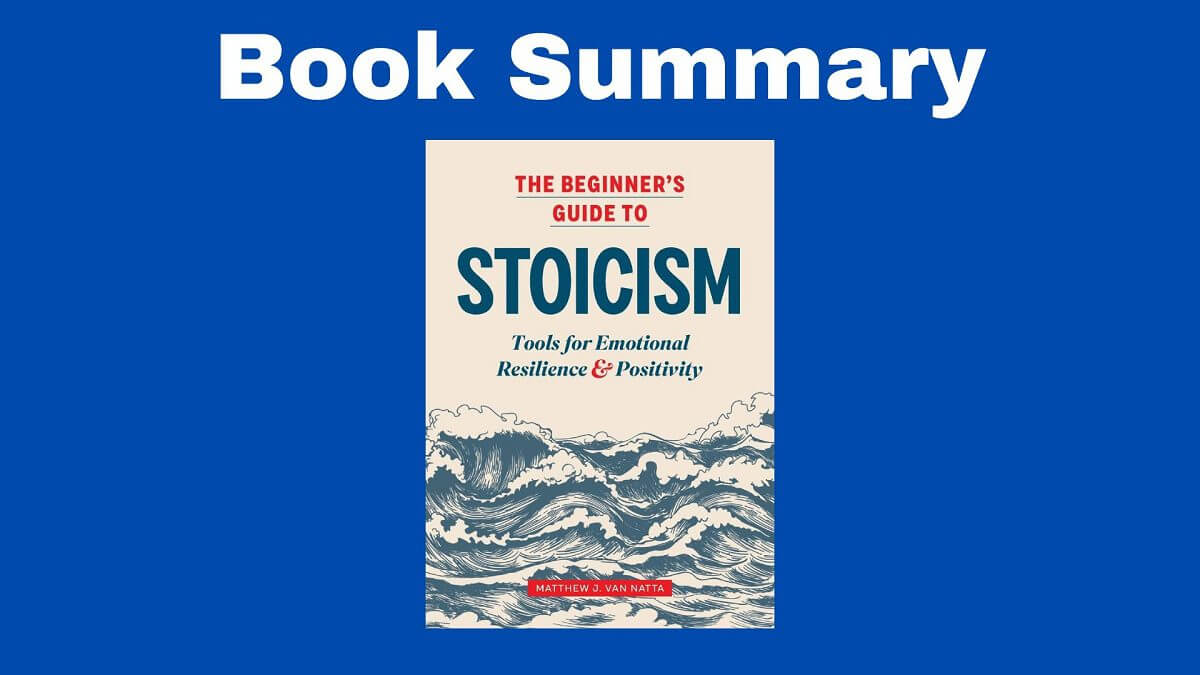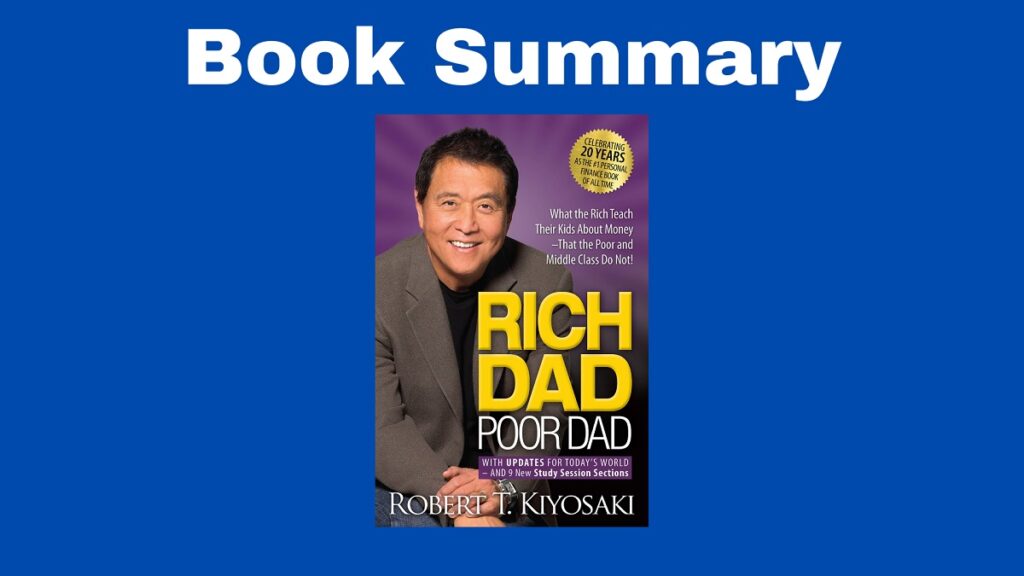The Book in Three Sentences
In this summary of The Beginner’s Guide to Stoicism, you’ll learn how to embrace positivity and self-control. This guide helps you achieve emotional resilience so that you can be happy. Among other things, this book teaches you how Stoicism has evolved over time, the mindset of the Stoics, and a practical take on the ancient school of philosophy so that you can apply it.
The Beginner’s Guide to Stoicism Summary
Part I: Foundations
Chapter 1: A Practical Philosophy
At its core, Stoicism is about being the best version of yourself in every moment. Stoicism is a philosophy that says that everyone can flourish despite external circumstances. For this purpose, you must cultivate a strong mind that only focuses on what you can control. This will bring emotional resilience which you’ll need to overcome obstacles. The aim of Stoicism is virtue or the art of being skillful at living life. The author makes a distinction between stoicism (small s) and Stoicism (capital S). While the former describes a confident person in adversity, it has an unhealthy connotation where the person in question represses their emotions and never deals with them. The latter addresses this problem by describing a person who overcomes problems but also leads a rich and emotional life. Stoicism isn’t about apathy, it’s about acceptance and this acceptance gives you clarity.
Stoicism started in Greece in 300 BCE and was a popular school of philosophy for around five hundred years. Zeno of Citium founded Stoicism after losing everything he had in a shipwreck. The former merchant taught lessons outdoors in a Stoa (a type of walkway) that gave Stoicism its name. The Roman Empire eventually adopted this school of philosophy. The works of Epictetus, Seneca, and Marcus Aurelius have been preserved.
One of Stoicism’s most powerful tools is the Dichotomy of Control which says that while some things are in our control, others aren’t. By focusing on the former and ignoring the latter, this becomes a filter you can use to make decisions and determine what’s worth your time and attention. Stoicism recognizes three disciples and four virtues.
The Three disciplines are:
- The Discipline of Desire: Desire that which is within your control
- The Discipline of Action: Look for healthy relationships
- The Discipline of Assent: Evaluate your thoughts and see events as objective
The four virtues are:
- Wisdom
- Courage
- Justice
- Moderation
Chapter 2: A Quick Trip Through History
While Stoicism started in Greece in 300 BCE, the school of philosophy went through a transformation when the Roman Empire adopted it. Early Stoic books are long gone, so what we know from the origins of Stoicism comes from titles, quotes, and book fragments.
Part II: The New Emotional Toolkit
Chapter 3: Thinking Like a Stoic
To thrive in life, you must control your mind. The discipline of desire is an important practice that involves not wanting things. The reasoning behind this is that if you want something and you’re unable to get it, you won’t be happy. So to live a life of happiness, you must train yourself to have as few desires as possible and they should be attainable. So understand what you can and can’t control, your desires being part of the former. Also bear in mind, that the only things under your control take place in the present moment, so accept the world as it is.
According to the discipline of action, action doesn’t guarantee success.
Finally, accept what happens and pause before responding. This is the discipline of assent and it has three parts: an initial impression, an objective representation, and a value judgment.
Chapter 4: Acting Like a Stoic
Virtue refers to the best version of yourself. There are endless opportunities to show virtue. The four virtues are wisdom, courage, justice, and moderation.
Wisdom: Its opposite is thoughtlessness. You are wise when you’re deliberate and when you use reason. Wisdom can be subdivided into:
- Good sense
- Good calculation
- Quick-wittedness
- Discretion
- Resourcefulness
Wisdom requires attention so that you don’t act reactively.
Courage: This is mastering your fears. Its opposite is cowardice. Courage can be subdivided into:
- Endurance
- Confidence
- High-mindedness
- Cheerfulness
- Industriousness
Avoiding certain things due to fear often leads to problems. Don’t avoid problems, avoid cowardice.
Justice: Stoic justice has more in common with morality than with following the law. By this definition, justice involves all interactions with other people and your role is to work with others. In other words, cooperation. The stoics describe justice with the following words:
- Honesty
- Equity
- Fair-dealing
- Goodwill
- Benevolence
- Mindedness
Moderation: This means controlling your desires. The opposite of moderation is excess. Moderation has the following parts:
- Appropriateness
- Modesty
- Self-control
The Stoics had a list of things they preferred over others. They called them preferred indifferents and they are:
- Your body
- Your property
- Your reputation
- Your job
Part III: Stoicism for life
Chapter 5: Cultivating Positivity
Your happiness shouldn’t rely on luck because fortune will never be a constant in your life. To secure happiness, your emotional well-being should depend on virtue because it’s well within your control. According to the Dichotomy of Control, you can’t control the outcomes of most things, but you can do your best in the actions preceding said results. You already have the tools to deal with the obstacles that come up in life, you just have to look within.
The Stoics identified three good passions these are the mental states that stem from a rational mind with good values. They are Joy, Wish, and Caution.
Chapter 6: Practicing Emotional Resilience
We all struggle with negative thinking, but by focusing on what we can control, we can turn it into positive thinking. Your virtue is something nobody can take away from you and this is a good start to being positive. Strong emotions and passions are something to avoid. There are four main passions: Fear, Appetite, Pleasure, and Distress.
- Fear tells you some sort of evil is coming. The opposite of fear is caution. To cure fear, see things outside of your control as indifferent.
- Appetite is the desire for something good. The opposite of appetite is wish. To cure appetite, desire virtuous actions rather than indifferent things.
- Pleasure is the exhilaration you get when you perceive something as good. The opposite of pleasure is joy.
- Distress is when your mind worries about something that’s not in the present moment. It has no opposite.
Chapter 7: Being of Service
Humans are social creatures. Follow a path that benefits not only yourself but others too. Stoicism sees humanity as a single organism which means we’re all connected somehow and we must cooperate.
Chapter 8: Continuing Your Journey
This book gives you the tools to start your Stoic journey, now it’s up to you. Some useful practices involve memorizing your favorite quotes, journaling, creating a deadly routine, and reflecting.
Further Reading
If you liked this summary of The Beginner’s Guide to Stoicism, you might also like:




